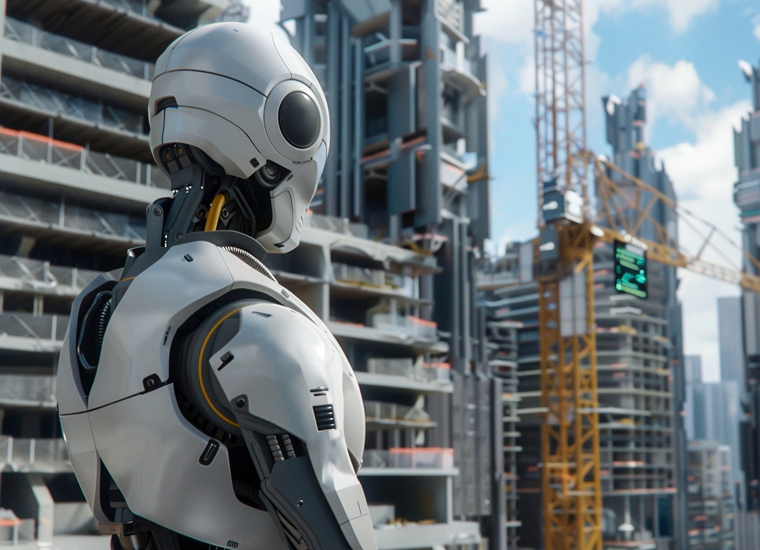AGP China Technology Report - Power Systems & Battery Technologies
Table of Contents
Page Section
03 Technology Overview
05 Historical Development Timeline
09 Product Differentiation
15 China Technology Ecosystem
17 Sino-Foreign Collaboration
24 Common Applications In China
28 Government Policy Support
32 Impact On Market Incumbents
35 Final Conclusion
36 Appendices
1.1 Global Snapshot
Definition and Importance
In the robotics industry, power systems and battery technologies are critical to ensuring robots' operational efficiency, autonomy, and adaptability. These technologies include energy storage solutions, power management systems, and charging infrastructures, which enable robots to perform tasks in diverse environments.
Key Technologies
- Energy Storage: Lithium-ion batteries are prevalent due to their high energy density and reliability. Emerging technologies like solid-state and lithium-sulfur batteries promise higher energy densities and improved safety.
- Power Management: Advanced Battery Management Systems (BMS) optimize battery health and energy use through real-time data analytics, enhancing lifespan and safety.
- Charging Technologies: Fast-charging and wireless charging solutions reduce downtime, increasing robot efficiency. High-power and wireless systems allow for rapid and seamless energy replenishment.
Global Benchmarks
- Tesla Optimus: Designed to perform tasks unsafe for humans, Optimus uses custom battery packs and energy management systems for optimal efficiency.
- Boston Dynamics' Atlas: A bipedal robot known for agility, using high-capacity batteries to support complex movements and extended activity.
Market Trends and Metrics
The global robotics battery market, propelled by autonomous system demand and battery technology advancements, is expected to grow at a CAGR of 19.0%, reaching USD 2.9 billion by 2025 (MarketsandMarkets, 2023). Key performance indicators include energy density, charging time, and cycle life.
1.2 China Snapshot
Market Position and Domestic Capabilities
China leads in battery production and power system technologies, significantly impacting the robotics sector. The country's dominance in lithium-ion battery manufacturing supports its leadership in robotics components, including advanced battery cells and energy management systems.
Leading Firms and Innovations
- CATL: The world's largest battery manufacturer, CATL is expanding into green-energy solutions, developing adaptable platforms for robotics applications.
- BYD: Known for electric vehicles, BYD's fast-charging and battery advancements offer reduced charging times and enhanced energy efficiency.
National Policies and Industrial Targets
Initiatives like "Made in China 2025" emphasize high-tech industry development, reducing foreign tech reliance and bolstering domestic innovation. The policy has propelled China to global leadership in technologies such as batteries.
Application Scaling and Cost-Performance Edge
Advanced battery technologies in robotics have expanded applications across sectors in China. The focus on electrification and renewable energy provides a stable power supply, benefiting the robotics industry.
Role in Advancing New Productive Forces
Humanoid robots, powered by advanced batteries, contribute to China's "new productive forces," addressing labor shortages and enhancing productivity in logistics, healthcare, and manufacturing.
Policy Relevance and Tech-Industry Integration
China's investment in power systems and battery technologies has created a robust ecosystem integrating technology and industry, fostering innovation and global competitiveness.
1.3 Market Size
Global Market Estimates
The global robotics battery market is predicted to grow at a CAGR of 19.0%, reaching USD 2.9 billion by 2025, driven by autonomous systems demand and battery advancements.
China-Specific Estimates
China's energy storage capacity expanded fourfold in 2023, with significant growth in lithium-ion technology, underscoring the country's leadership in energy storage and battery production.
Growth Scenarios
- High Growth: Rapid adoption of advanced technologies and strong policy support could lead to a CAGR exceeding 20%.
- Medium Growth: Moderate advancements and steady adoption may result in a CAGR of about 15%.
- Low Growth: Limited progress and incentives could constrain growth to a CAGR below 10%.
Market Breakdown
- Application Domain: Industrial automation, service, and healthcare robotics are key segments driving demand.
- Customer Segment: Predominantly large enterprises in manufacturing and logistics, with growing interest from SMEs.
- Geography: Asia-Pacific, led by China, dominates the market, followed by North America and Europe.
In conclusion, power systems and battery technologies are vital to the global robotics industry's advancement. China's strategic innovations and investments have established it as a leader, influencing global market dynamics and setting benchmarks for future developments.
AGP Insights
Download PDF.
Your PDF report was sent successfully to your inbox!
Related Insights.











